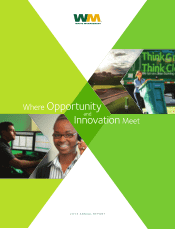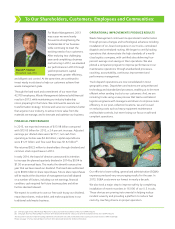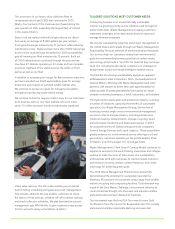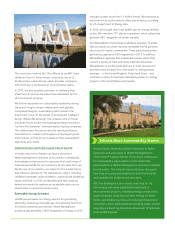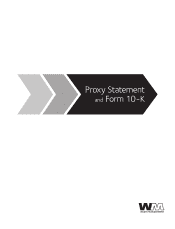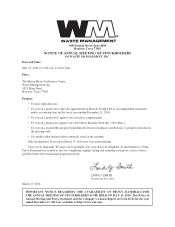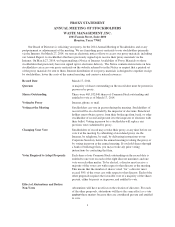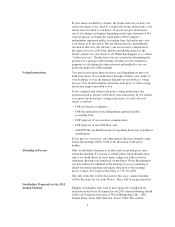Waste Management 2013 Annual Report Download - page 5
Download and view the complete annual report
Please find page 5 of the 2013 Waste Management annual report below. You can navigate through the pages in the report by either clicking on the pages listed below, or by using the keyword search tool below to find specific information within the annual report.
The event also received the “Zero Waste to Landfill” claim
validation from UL Environment, a business unit of UL
(Underwriters Laboratories), which provides companies
with third-party verification of environmental claims.
In 2013, we also assisted customers in validating their
attainment of zero waste milestones established by the
UL Environment program.
We further expanded our sustainability leadership during
the year through a unique collaboration with globally
recognized designer, sustainable growth pioneer and
preeminent voice for the power of ecologically intelligent
design, William McDonough. The initiative aims to foster
and guide future product and packaging design innovation
“up from the dumpster” among industry-leading companies.
The collaboration focuses on directly serving producers,
manufacturers, retailers and suppliers of packaged goods
and products as they strive to advance their sustainability
objectives and results.
INNOVATIONS CAPTURE VALUE FROM WASTE
Virtually every form of waste can have a second act.
Waste Management continues to be a leader in developing
technologies and processes to repurpose the broad range of
materials we handle for our customers. At the same time, we,
like the rest of our industry, are subject to the market forces
that influence demand for the materials we collect, including
cardboard and paper, glass and plastic, industrial and hazardous
waste, and food. In 2013, we identified and took steps we
believe are needed to maintain an acceptable return on our
investments in extracting waste’s value.
Renewable Energy Solutions
Landfill gas and waste are energy sources for generating
electricity, producing renewable gas, and replacing fossil fuel
for homes, industries and vehicles. Waste Management
produced approximately 1,400 megawatts of energy in 2013,
enough to power more than 1.1 million homes. We produced as
much electricity as the nation’s utility solar industry, according
to U.S. Department of Energy data.
In 2013, we brought three new landfill-gas-to-energy facilities
on line. We now have 137 plants in operation, which collectively
generate 683 megawatts of power annually.
Our Wheelabrator Technologies subsidiary operates 17 plants
that use waste as a clean-burning, renewable fuel to generate
electricity for nearby communities. These plants had a power
generating capacity of 669 megawatts in 2013. In addition,
Wheelabrator operates four independent power plants that
convert a variety of fuels and waste materials into power.
Wheelabrator is working with partners to build, operate and
provide technical support for new waste-to-energy plants
overseas – in the United Kingdom, Poland and China – and
continues to move forward with developing waste-to-energy
projects in the United States and Canada.
Arizona State University and the University of Notre
Dame are avid advocates of Waste Management’s
Think Green® Campus Model. The schools’ enthusiasm
for sustainability was evident in 2013 when they
participated in a Waste Management-sponsored webinar
for educators. The schools’ representatives discussed
how they are using sustainability to build their brands
and compete for students and resources.
ASU has developed a zero-waste road map for its
full campus and made substantial investment in
environmental projects, including energy conservation,
waste diversion, recycling and solar energy. At Notre
Dame, sustainable practices are reducing emissions by
more than a third, while initiatives including single-stream
recycling are diverting more than 40 percent of materials
from landfill disposal.
Schools Share Sustainability Stories

